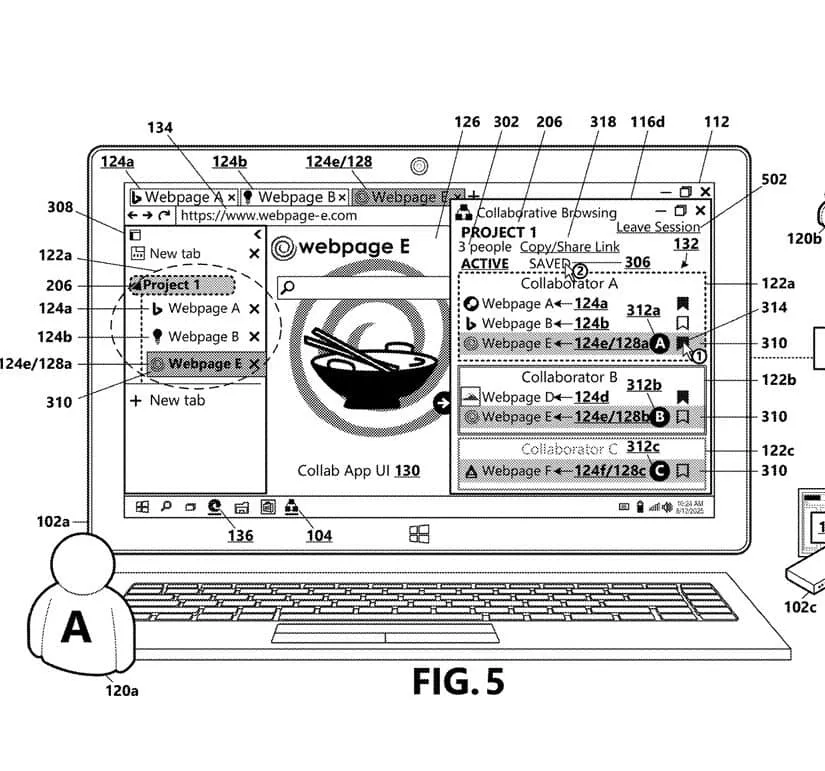Microsoft Patents New Co-Browsing Technology for Real-Time User Collaboration Online
Microsoft Edge has been enhanced to be as feature-rich as Google Chrome, with some users even claiming it surpasses the world’s most popular web browser. The tech giant from Redmond continuously rolls out updates, introducing new settings (along with a revamped user interface), innovative features like Copilot, and a host of beneficial functionalities—including what some consider the best PDF reader available.
Notably, a recently revealed patent from Microsoft discloses a groundbreaking co-browsing technology related to Edge (and potentially any other web browser). This advanced technology supports a multi-user approach to Internet browsing, enabling multiple individuals to navigate the web together in real-time.
Upon initiating a collaborative session, each participant is assigned a specific group of tabs. Additional participants can be invited to join, each receiving their own dedicated tabs for the session.
While collaborative or co-browsing is not a new concept, its recent surge in popularity is particularly pronounced within the corporate sector. Previously, co-browsing typically occurred in secure environments, as mainstream browsers lacked native support for such features, relying instead on specific extensions or plugins.
With Microsoft’s patented co-browsing technology, these individual tab groups are unified into a single group that synchronously updates with any modifications made by participants. For instance, when a user makes a change, that information is transmitted to a central service, which subsequently updates all participants, maintaining synchronization.

The Collaborative Browsing Experience revolutionizes online sharing, allowing multiple individuals to browse the web concurrently. Imagine it as a virtual meeting room where everyone has access to and can interact with the same web content.
Participants can see real-time activity from others in the session as well as previously saved activities. Upon starting a collaborative session, a dedicated group of browser tabs is formed, linked to the initiator.
Inviting others to join your session allows them to access their unique set of tabs. These individual tab groups merge into a comprehensive group that updates in real time with any changes, like opening new tabs or navigating to different pages.
When a user makes a change, it first occurs locally on their device. This change is then communicated to a central service, which organizes and disseminates the updates back to all participants, ensuring everyone’s browser displays the same tabs and pages.
This innovative technology facilitates seamless co-browsing, allowing users to share browsing activities effortlessly while keeping everyone informed of real-time updates.
Although Microsoft does not specifically name Edge, it indicates that this technology can accommodate users across various devices—including desktops, wired and wireless computing systems, mobile phones, tablets, notebooks, and laptops.
You can read the complete patent here.
Leave a Reply